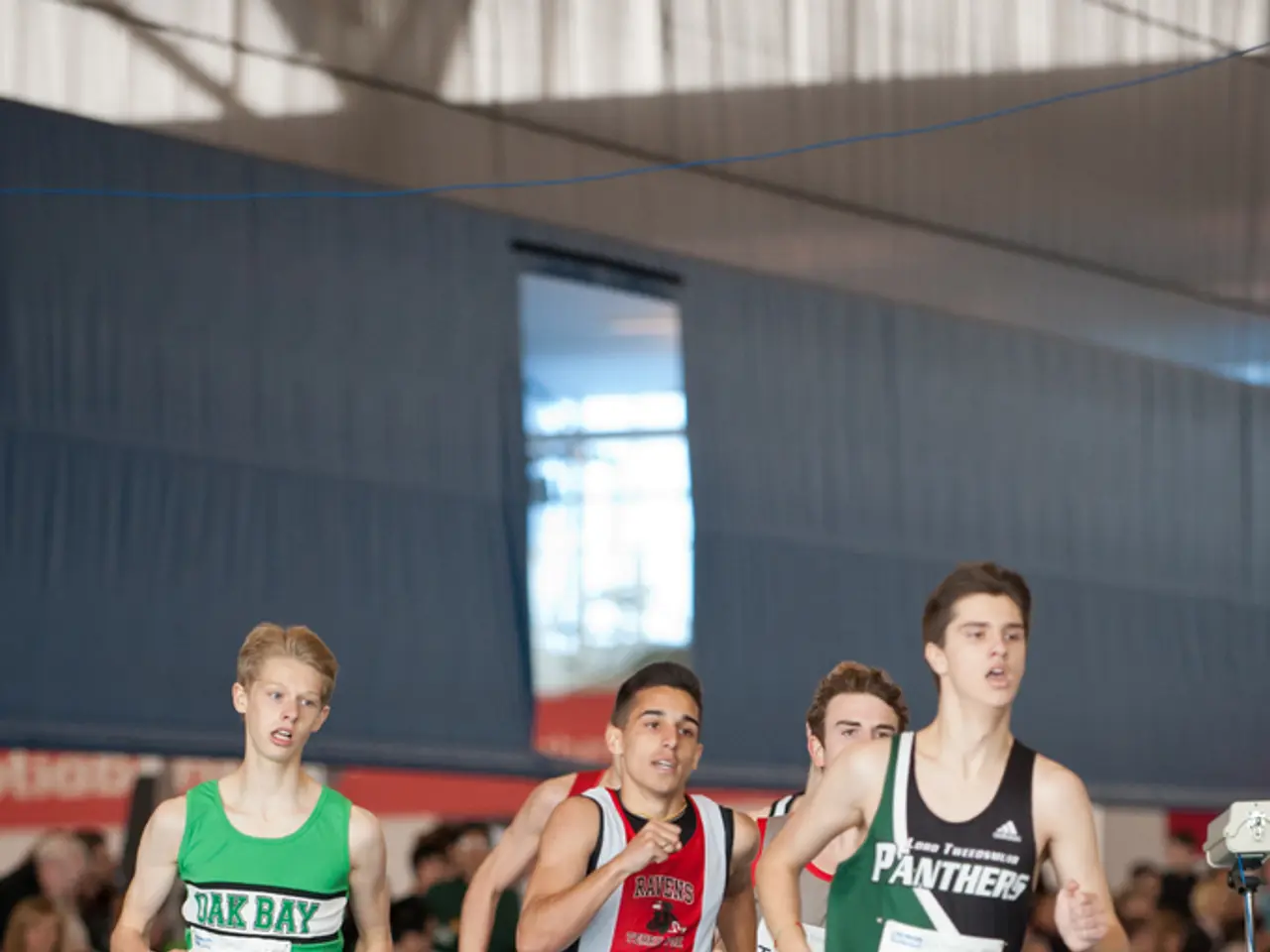Expanding profit margins remain between 7-9% for the fitness industry, yet its market demand continues to surge, with competitors escalating in size.
In the first half of 2025, Russia's fitness industry has experienced significant growth, with a 23.9% year-on-year increase in its market volume, reaching 150.5 billion rubles. This growth is evident in the number of new fitness centres and studios that have sprung up across the country.
According to recent data, 906 new companies specialising in fitness centre activities were registered in Russia during the first six months of the year, marking a 27.4% year-on-year increase. This surge in new businesses is also reflected in the number of full-fledged fitness clubs that were opened, with a 1.5x increase from 2024.
Most of these new openings are sports studios, accounting for 72% of the total openings in the first half of 2025. The remaining 28% are larger facilities, including clubs with pools and larger fitness centres.
The cost of launching a fitness business varies significantly depending on the size of the facility. A studio of 70-100 sq.m. typically costs an average of 3-5 million rubles, while a club of 100-500 sq.m. can cost from 10 million rubles. Large facilities with a pool can cost over 200 million rubles.
Despite the growth in the industry, challenges remain. For instance, Olesya Krasnomovets, Olympic champion and founder of Run4Life school, shared insights on the challenges faced by a running club.
One such challenge is the increasing labour costs, which have risen by 11-12% year-to-date. Additionally, repair and equipment costs have increased by 12-13% year-to-date, and rental payments have risen by 8-9%. These increases have impacted the net profit margin of the fitness business, which decreased by 1 percentage point year-on-year.
However, the industry remains resilient. Clubs with pools take more than five years to break even, while "dry" clubs take 3.5-5 years. Despite the high initial costs and challenges, the industry continues to attract new entrants, with 72 full-fledged fitness clubs being opened in the first seven months of the current year.
The average check for fitness services has also increased, rising by 10.1% year-on-year to 4,100 rubles. This increase, combined with the growing number of fitness centres and clubs, has led to a 5% year-on-year increase in the number of transactions for paying fitness hall and sports centre services.
As of now, there are 14,400 fitness centres and studios operating in Russia, marking a 2.9% year-on-year increase. The gross margin of the fitness business was 7-9% in the first half of 2025.
Despite the growth and challenges, there is currently no information available about a female entrepreneur opening a running training business in Russia in 2025 or the name of such an establishment.
In conclusion, Russia's fitness industry is experiencing a boom, with a significant increase in the number of new businesses, transactions, and the market volume. However, challenges remain, including increasing costs and the time it takes for clubs to break even. Despite these challenges, the industry continues to attract new entrants and grow.
Read also:
- visionary women of WearCheck spearheading technological advancements and catalyzing transformations
- Recognition of Exceptional Patient Care: Top Staff Honored by Medical Center Board
- A continuous command instructing an entity to halts all actions, repeated numerous times.
- Oxidative Stress in Sperm Abnormalities: Impact of Reactive Oxygen Species (ROS) on Sperm Harm








